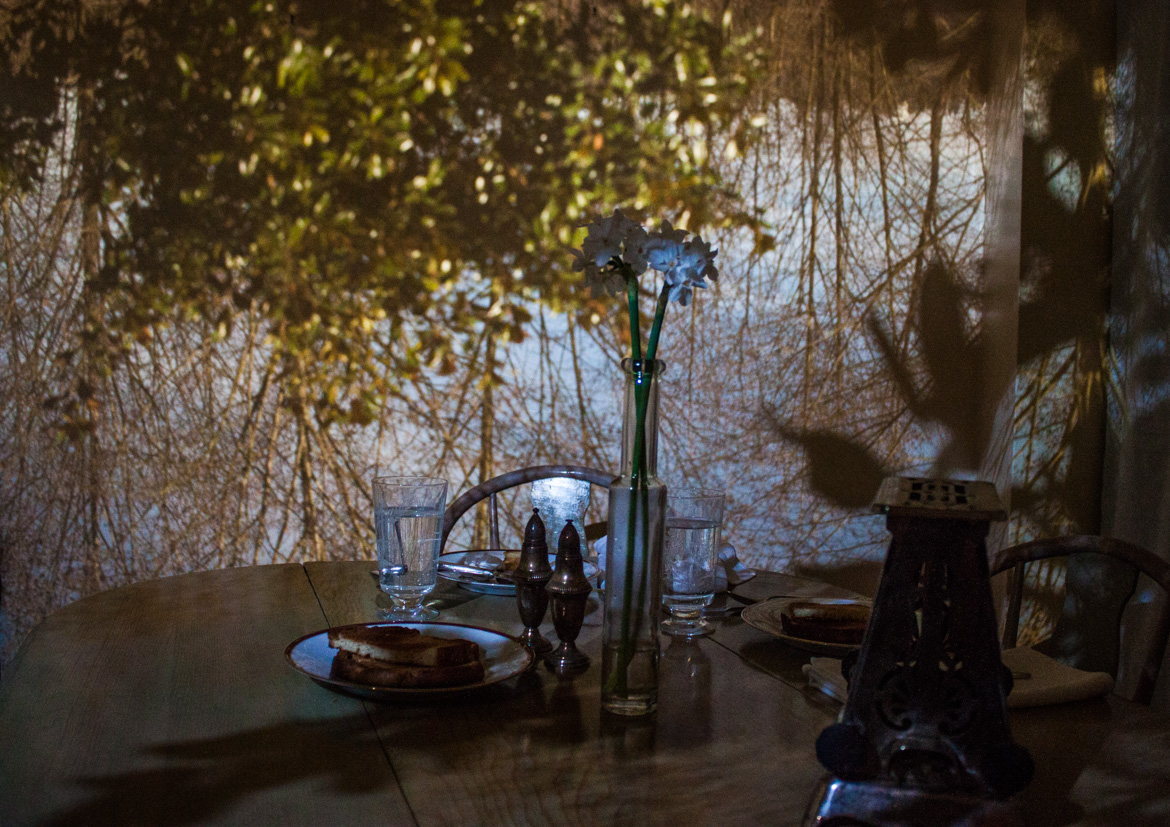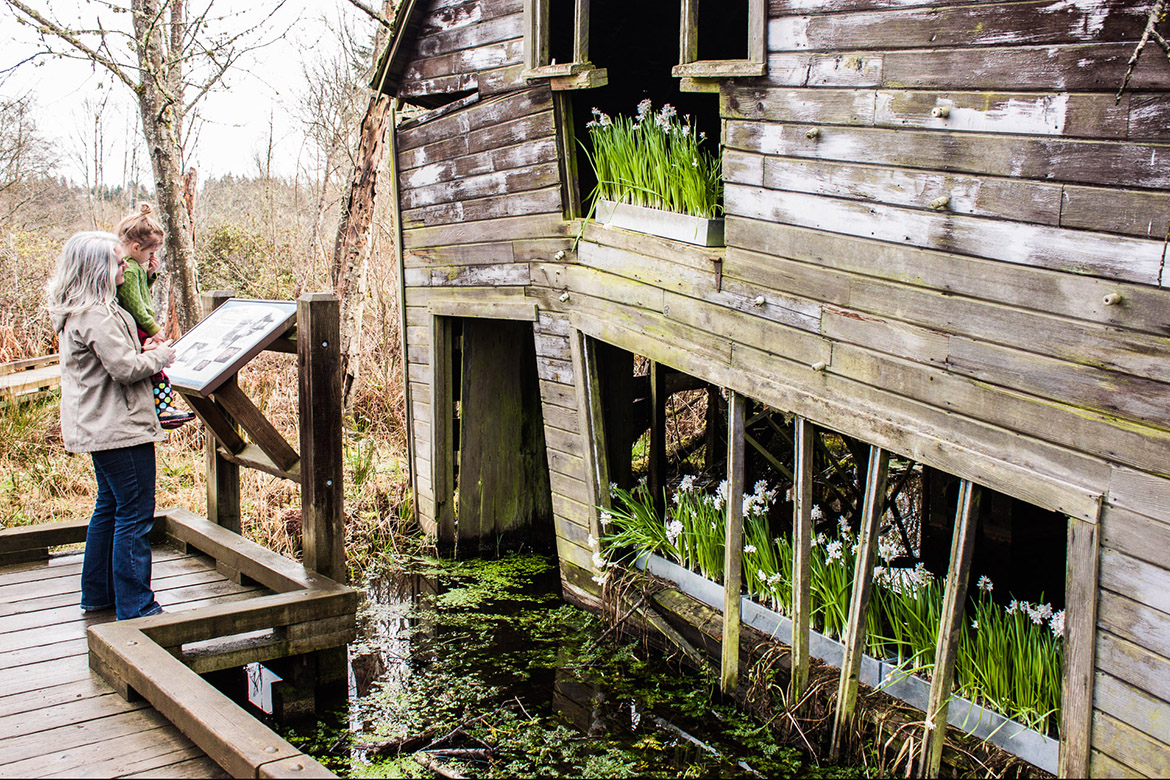Winter’s Veil
Frederick Winters House and the Mercer Slough – Bellevue, WA
Installations in the breakfast room and the adjacent boiler building exploring the Winters’ House history in relation to the lowering of Lake Washington resulting from the Montlake Cut. Funded by 4Culture Historic Site Specific. 2015.
Listen to a 1 minute excerpt from the 17 minute breakfast room audio installation by Ellen Sollod and Johanna Melamed.
The 1916 completion of the Montlake Cut and Lake Washington Ship Canal dramatically altered Lake Washington. One impact of the Cut was the transformation of the Mercer Slough to expose a fertile peat bog that gave way to farming. In 1917, Frederick Winters, apparently seeing financial advantage in the property, bought 10 acres to establish a wholesale florist business. By 1929, he had completed the house that is now on the National Register of Historic Places. An outbuilding housed a boiler for the adjacent green houses (no longer extent). Partially overgrown and in a dilapidated state, the building, complete with a remnant of the boiler, is still present in the Slough today.
Ellen has been fascinated by this history for nearly a decade and had previously created an exhibition and soundscape in response. The Winters House represented another layer to explore. Building upon other site specific installations that she created that have explored the history of a site, she saw a rich opportunity here. She deepened the connection between the present day and the historical transformation of Lake Washington, revealing the connection between the Winters House and the Slough, and the Slough to its agricultural history and its connection to the lowering of the Lake.
Ellen created a camera obscura in the Winters House breakfast room overlooking the slough and collaborated with Johanna Melamed on an audio installation composed of sounds recorded in the Slough, domestic sounds that might have been heard when the Winters lived there along with selected archival radio broadcasts from that era. The table was set for breakfast and the smells of fresh toast and the fragrance of paperwhites filled the room.
In the boiler house were flowers blossoming from bulbs, the same variety that Winters had grown. Ellen forced paperwhites over the winter which filled the windows. Taken together the two installations evoked a sense of history of place.
Concurrent with this installation, Bellevue College Gallery presented the complementary exhibition Lake Washington Palimpsest.


